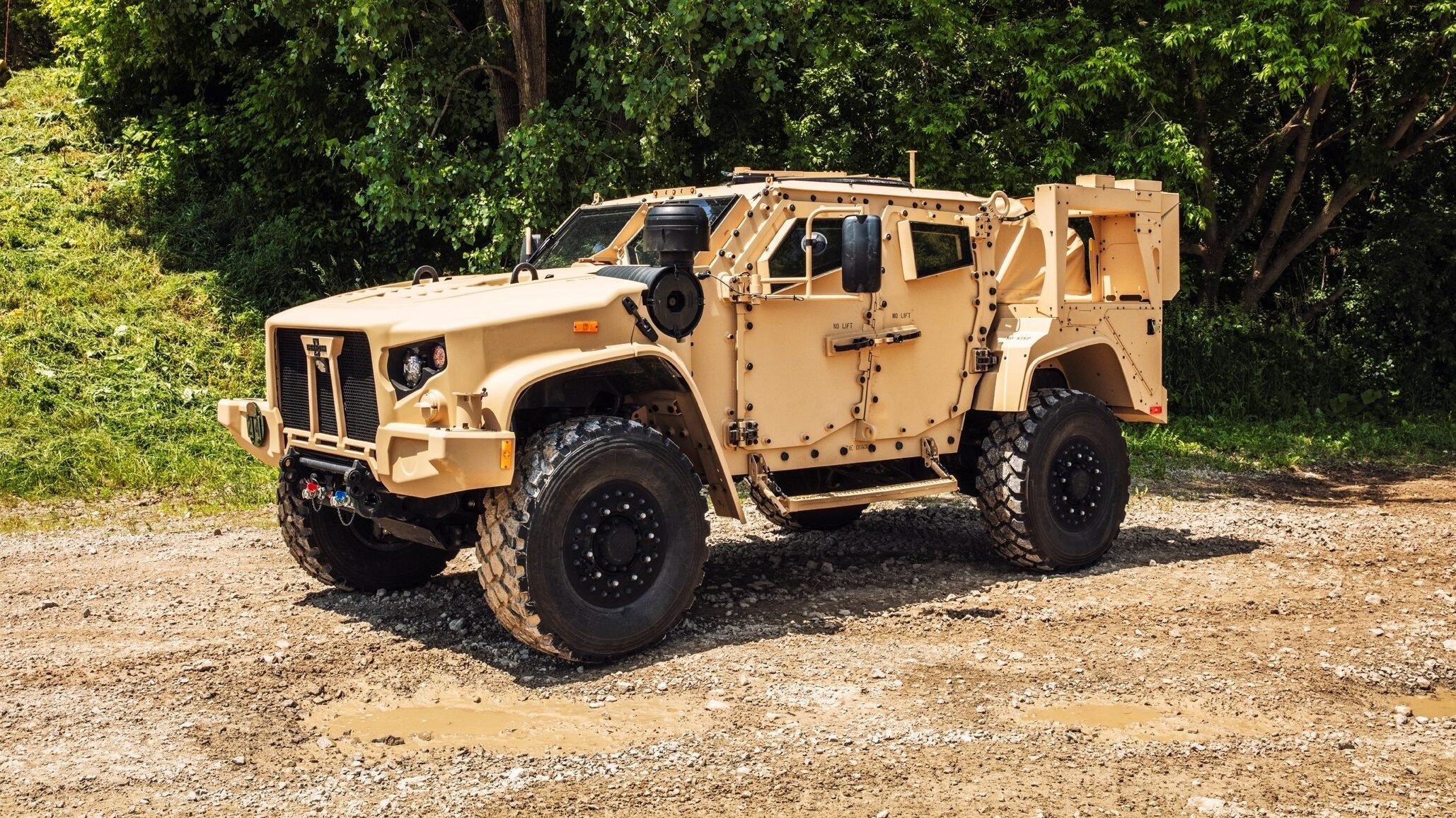
Shown here is a US Army JLTV by Oshkosh Defense. (US Army)
EDITOR’S NOTE: This report was updated 2/9/23 at 6:30 pm ET to include comments from the Army and AM General.
WASHINGTON — In an upset to incumbent Oshkosh Defense, the Army has selected AM General to produce its Joint Light Tactical Vehicle (JLTV) and ended a years-long attempt to replace the service’s Humvee at a reduced price point.
In the immediate aftermath of the decision, revealed Thursday evening in a contract announcement, a variety of unanswered questions remain about acquisition plans and the per-unit price tag. Under the new deal, AM General has received a $230.8 million contract. However, that deal could be worth up to $8.66 billion over the next decade for up to 20,682 JLTVs and 9,883 trailers, according to new Army numbers. The dollar figure is an increase over the $7.3 billion the government previously circulated.
“This competitive follow-on production contract has been part of the JLTV acquisition strategy from the beginning and focused on a best value determination that includes retaining the capability of the JLTV today, while ensuring that it can be upgraded in the future with the latest technologies,” the Program Executive Office Combat Support & Combat Service Support (PEO CS&CSS) wrote in the announcement tonight.
In a brief statement, AM General President and CEO Jim Cannon said the company is “humbled and honored” to receive the contract and noted that the vehicles will be built at the company’s Mishawaka Manufacturing Campus (MMC) in Indiana.
The Army could, of course, decide to recompete later contracts in the program.
In 2015, the Army tapped Oshkosh Defense to begin manufacturing its JLTV line and awarded the company with a $6.7 billion low-rate initial production (LRIP) contract for the initial 16,901 vehicles before approving full-rate production in 2019. However, the government owns the JLTV technical data package, and Army acquisition officials decided to recompete the production contract to determine if Oshkosh Defense, or another team, could build the line of vehicles at a reduced cost.
“One of the key strategies of the JLTV program from its earliest days was to leverage competition to control cost and maximize buying power for the government,” said Brig. Gen. Samuel Peterson, the program executive officer for the PEO Combat Support & Combat Service Support office.
“These government-held data rights permitted the program to compete this follow-on production contract with much better control of the production configuration and cost,” he later added.
In the lead up to today’s announcement, the Army has continued placing JLTV orders with Oshkosh. Earlier this month, for example, the service announced it had placed another order with the company valued at $85 million. (Those funds would largely come from fiscal 2022-23 Air Force coffers, as those vehicles are going to the Air Force by September 2024; while other services use JLTV, the Army serves as the lead procurement authority.) Oshkosh subsequently noted that the contract modification was the third such one in two months and the trio of orders totals $730 million for more than 2,000 JLTVs for nine different customers.
Many Questions Remain
For the first time today, the Army said in its announcement that two companies bid on the contract, and Oshkosh Defense had previously said it had bid on the program. However, it isn’t clear which team GM Defense joined. It had previously discussed plans to compete but subsequently decided it was a better business decision to join an unnamed “competitive team” and “insert technical enhancements” for possible future variants and requirements, a spokeswoman told Breaking Defense on Monday.
Also, not clear is whether the Army succeeded in reducing the price point for each new JLTV and its companion trailer, in part because the service’s FY23 budget request said the per unit cost could actually increase in 2023 “due to higher estimated unit costs for the competitive follow-on contract.” FY23 budget request documents said the Army expects to spend $413,000 for each JLTV this year.
“If a new manufacturer other than Oshkosh is chosen in 2023, the new manufacturer could face higher costs than Oshkosh during the first year of its contract, as it would not have Oshkosh’s experience building the JLTV,” the Congressional Research Service (CRS) wrote in a report released last month. “In such a case, it is anticipated costs would decrease significantly after the first year of the contract.”
Sticking with Oshkosh could have also raised costs too, CRS warned, because JLTV cost elements could fluctuate in later years due to “unpredictable prices and strong commodity-related inflation.”
Another question mark revolves around acquisition numbers. Last year, the Army said its own procurement objective was for 49,099 JLTV trucks and 18,224 trailers. However, CRS noted that Army’s force structure changes could alter this number, while the Marine Corps’ Force Design initiative could also reduce the number of vehicles it needs too, a move that could increase the per-unit cost.
“Despite the Army’s intent to lower costs by competing a follow-on contract with another vendor, slowing production rates and extended procurement timelines could act to increase costs if current JLTV requirements are no longer valid,” CRS wrote. “In addition, different versions of the JLTV produced by another vendor could result in additional operations and maintenance costs that can result from a mixed fleet of vehicles.”
Accordingly, the Congressional watchdog suggested that lawmakers review JLTV costs after the Army awards the follow-on contract.
‘AI-BOM’ bombs: Army backs off, will demand less detailed data from AI vendors
Instead of demanding an exhaustive “AI Bill of Materials.” the Army will only ask contractors for a “baseball card” of key stats on their AI — while building up its in-house capacity to check for bad code or “poisoned” data.


























